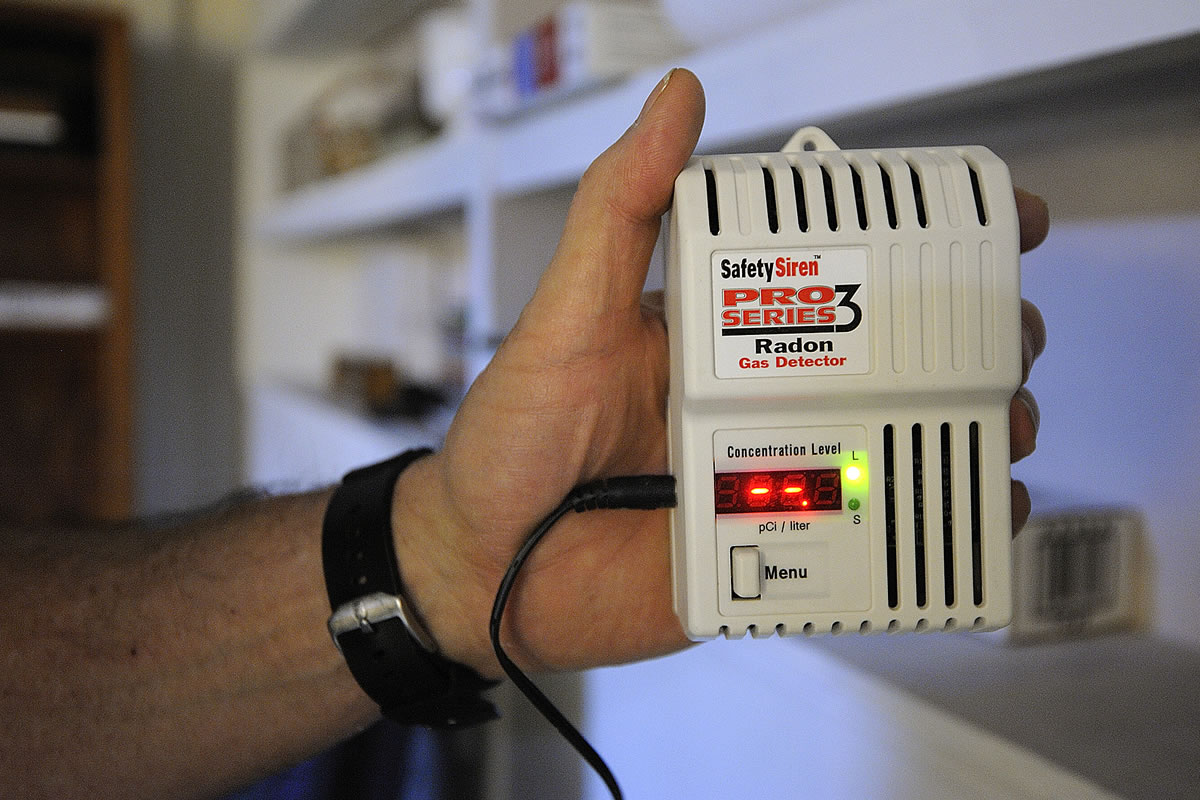“If you look at Western Washington soils in general, there’s not all that much in the way of radon,” said Mike Brennan, radiation health physicist at the Washington Department of Health. “But in areas where the glacial Lake Missoula Floods came through, it can have a significant amount.”
A new Portland State University report lists radon levels by ZIP code on the Oregon side of the river. The floods blasted through the area, along the channel of the Columbia River, depositing the rock.
The Washington side doesn’t have as detailed a radon study, but if you look at the Environmental Protection Agency maps of the region, they show both Clark and Skamania counties have potential rates of 4 picocuries per liter of air or higher. That’s the highest rate listed by the agency, and the level at which it recommends fixing problems.
But even the more detailed maps of the Portland area can’t predict which homes might have radon sources beneath them. Sometimes it varies from house to house or street to street, Brennan said.
“Even if you look at a map and it says your ZIP code isn’t as high as a neighboring one, it doesn’t mean you don’t have radon — it’s a random chance,” Brennan said. “Radon is really not a respecter of geopolitical boundaries. It really doesn’t care where a state or county line was drawn.”
During the Missoula Floods, a massive glacial lake near what is now Missoula, Mont., burst through a barrier of melting ice. The deluge picked up and deposited rocks along a wide swath that ran through what is now Idaho and the Spokane area, which has a lot of naturally occurring uranium, and on through the Columbia River channel into Southwest Washington on Northwest Oregon.
“At the peak, the flood was 10 cubic miles of water per hour, and that went on for a couple days,” Brennan said. “At one moment, you had this wall of ice holding up an 1,800 foot deep lake, and in another moment, you didn’t.”
Uranium was in some of the rocks deposited by that flow. Trying to determine the randomness of where they landed is like tracking a pebble as it travels down the flow of a massive river– nearly impossible, Brennan said.
“In the Vancouver area, the chances of radon are higher in places where the floods deposited material, but the average person won’t be able to determine that,” Brennan said. “Overall, you might say that closer to the river, there’s a somewhat higher chance.”
If you haven’t had your home tested, it’s a good idea to get it done, he said.
Tests range from free, if you’re participating in a study, to up to $40, depending on what sort of kit you use, he said.
“Radon is a naturally occurring gas that is the decay product of radium, which is the decay product of uranium,” Brennan said. “When you inhale those decay products in the lungs, it exposes them to that radiation.”
Exposure to radiation can cause lung cancer, but smoking is by far the leading cause of the disease, accounting for about 90 percent of all cases, said Clark County Health Officer Dr. Alan Melnick.
According to the American Lung Association and the EPA, there are about 120,000 smoking-related and 21,000 radon-related lung cancer deaths each year in the United States. About 2,900 of the radon cases occurred in nonsmokers.
Because smoking accounts for most cases and can work in conjunction with radon exposure, there isn’t any data specifically on radon-related lung cancer rates in Clark County, he added.
“Even if you have radon in your home doesn’t mean you’ll get lung cancer,” Melnick said. “And if you do detect it, there are things you can do to prevent it.”
In some cases, sealing cracks in the foundation of a home can prevent radon gas from entering. In more severe incidences, homeowners can install a venting system, which could cost up to a few thousand dollars, Brennan said.
If the costs give homeowners pause, Brennan also noted that requests for radon testing are growing in popularity as part of real estate transactions.
“If your house has elevated radon, you’re probably going to have to pay for it to be fixed anyway, so why not pay for it while you’re actually in the home,” Brennan said. “Besides, it’s a way to protect your family.”
Sue Vorenberg: 360-735-4457; http://www.columbian.com/col_suevo; sue.vorenberg@columbian.com.



